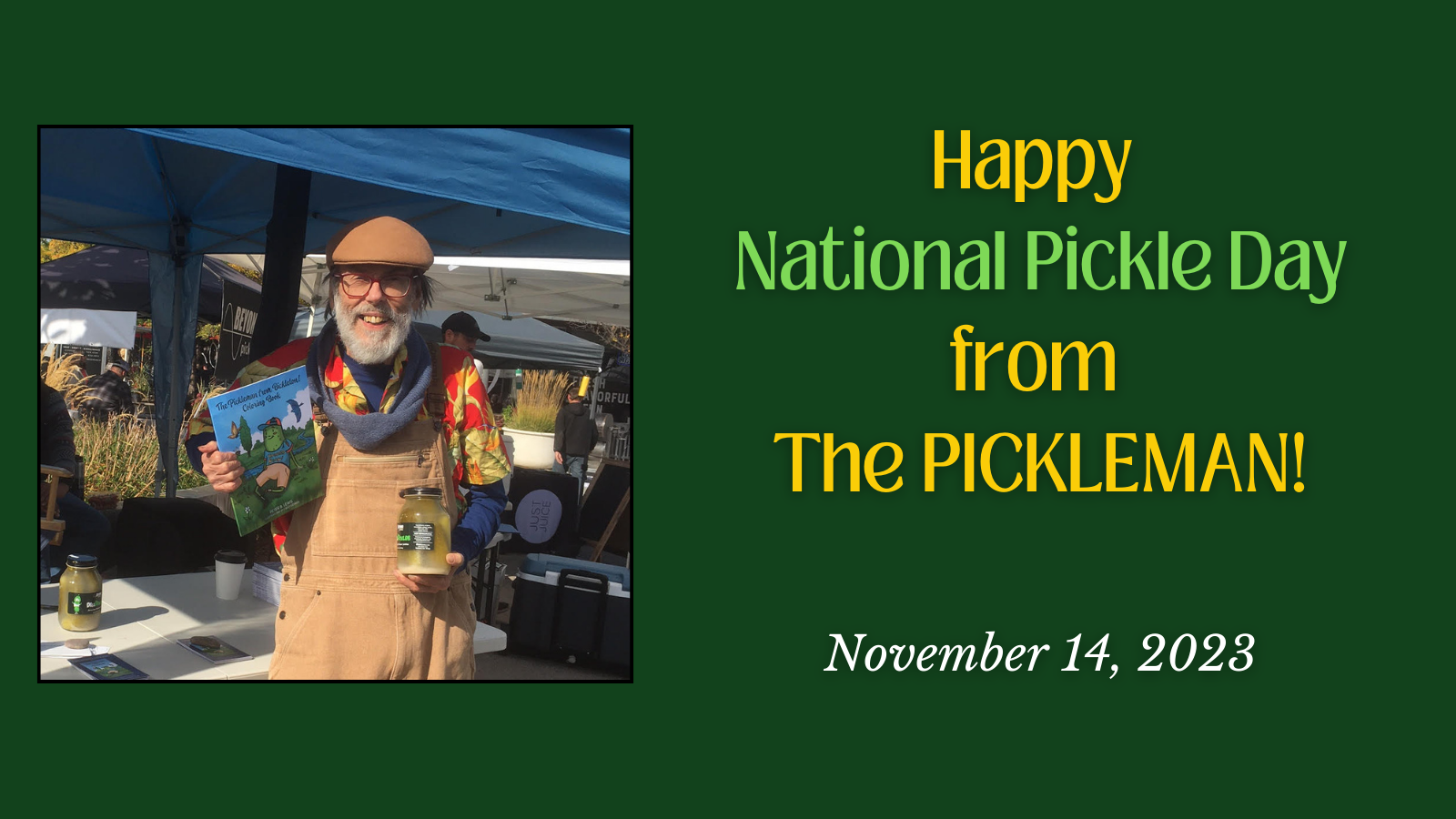Fun Pickle Facts for National Pickle Day!

Did you know?
- A pickle is a cucumber that has been pickled in a brine, vinegar, or other liquid and left to ferment for a period of time.
- The term “pickle” comes from the Dutch word pekel, which means “brine.”
- While they’re “pickles” in the U.S. and Canada—in Britain, Ireland, Australia, South Africa, and New Zealand, they’re “gherkins.”
- 26 billion pickles are packed each year in the U.S., and more than half the cucumbers grown in the U.S. are made into pickles.
- The most common pickles are dill pickles, which are all created with process using the aromatic herb dill weed.
- For herbs and spices, pickles don’t just use dill—they can also include allspice, bay leaves, cloves, nutmeg, fennel, cassia, mustard, basil, ginger, mustard seed, and thyme, as well as hotter or spicier options, like black pepper, onions, garlic, red pepper flakes, and more.
- People have been pickling for thousands of years! Experts say that the ancient Mesopotamians pickled food as long ago as 2400 B.C., using brine as a powerful food preservative. They were also popular in ancient India, where people pickled local cucumbers around 50 B.C.
- Queen Cleopatra believed pickles boosted her health and beauty, and Julius Caesar fed them to his soldiers for health and nutrition.
- Famed philosopher Aristotle is reported to have given high praise to pickles for their healing and health benefits, as far back as around 850 B.C.
- Did you know that America’s namesake, Amerigo Vespucci, was a pickle salesman who was also the main pickle supplier to many ships of the time?
- The phrase "In a pickle" was first used by the Dutch, who used the phrase "in de pekel zitten"—meaning, “to sit in pickling solution.” The phrase was later used by Shakespeare in his play The Tempest, when Alonso asks Trinculo, "How camest thou in this pickle?"
- Pickles were brought to America by Christopher Columbus -- they were present on board many ships of the time since pickling meant they survived long journeys while also helping to stave off scurvy.
- At the 1893 Chicago World's Fair, H. J. Heinz of the famed Heinz brand gave away pickle-shaped pins to lure customers to his booth. By the time the fair ended, he had given away over 1 million pickle pins, which are still collectors items 130 years later!
- In the U.S. today, pickles are made in 30 out of 50 states, with Michigan and North Carolina making the most pickles of them all.
- According to the Department of Agriculture, the average American eats over 8-9 pounds of pickles per year.
- The warm and humid climate of the Pacific Islands causes rapid food spoilage, so for over 2,000 years, indigenous communities combat this by preserving fruit in fermentation pits, which are dug in the ground and lined with banana leaves to form a protective barrier against the soil.
- By the 2010s, Americans ate more than 2 million pounds of pickles per year. Today? They eat more than 2.5 BILLION pounds of pickles per year!
- Pickling vegetables not only improves their flavor, it also makes them more nutritious! In addition to the natural antioxidants in cucumbers to help fight off illness and boost immunity, the fermentation during the pickling process causes the bacteria to produce vitamins, and if the solution includes salt, the fat-soluble vitamins become more concentrated. Due to fermentation, pickles contain also probiotics and are good for digestion.
- Pickles soared in popularity after kosher pickles were introduced to America by Eastern European Jewish immigrants in the late 19th century.
- During World War II, the U.S. Government rationed pickle purchases and tagged 40 percent of all pickle production to be used for the ration kits of the armed forces during the war.
- You can hear the crunch of a good pickle at 10 paces. A great pickle? You can hear at 25 paces.
- In Connecticut, in order for a pickle to be officially considered a pickle, it has to bounce.
- Athletes love Pickle Power! Star pitcher Nolan Ryan attributed part of his strikeout career to pickle brine. Rookie pitchers were also taught afterward to soak their fingers in pickle brine. Meanwhile, when the Philadelphia Eagles defeated the Dallas Cowboys in September 2000, many of the players attributed their win to drinking huge quantities of ice-cold pickle juice to combat the blazing 109˚ F temperatures.
- A later study at Brigham Young University backed these claims with science, showing that drinking pickle juice relieved cramps “45 percent faster” than drinking no fluids—and about 37 percent faster than water.
- Learn more about pickle nutrition from the USDA Website.
Get your copy of The Pickleman from Bickleton!
I like that it discusses how important pollination is in the food cycle, and addresses preserving food. A lot of good talking points can come from the story, with a lot of fun rhyming going on. Love the illustrations!
— Marletta Iwasyk, Seattle Public Schools
You must be logged in to post a comment.